(!) Since support from Microsoft will end on January 14th, 2020, Windows 7 will be excluded from the recommended environment from December 15th, 2019 on this site. Vì lý do Microsoft kết thúc hỗ trợ cho Windows 7 vào ngày 14/01/2020, Windows 7 sẽ là hệ điều hành không được khuyến khích sử dụng với trang web này từ ngày 15/12/2019.
Search by Category / Brand Tìm theo danh mục, nhãn hiệu
Search by Category Tìm theo danh mục
- [Thông báo] Cập nhật địa chỉ kho tập kết hàng hóa tại khu vực miền Nam của MISUMI Việt Nam. Xem chi tiết.
[Announcement] Update on warehouse address in the Southern region of MISUIMI Vietnam. See more. - [Cảnh Báo] Thủ Đoạn Lừa Đảo Từ Nhân Viên Giao Hàng – Yêu Cầu Trả Phí Ship. Xem chi tiết.
[Warning] Fraud Calling from Shipper - Asking to Pay Shipping Fee. See more.
Solenoid Valves(Applicable Cylinder Dia.:140or More)
Brand |
|
|---|---|
| CAD |
|
| Days to Ship |
|
1 itemsMặt hàng
- Sort By
-
You can add up to 6 items per a category to the compare list.

Control Unit Special Purpose Solenoid Valve Mechanical Valve Round Series
KOGANEI
Highly reliable pneumatic solenoid valve backed by many years of experience.[Features]·Compact and lightweight, no sticking, free mounting orientation, lubrication-free·Withstands high frequency operation and has a long lifespan. There are many types of voltage, common to all models·The current is small·No solenoid disconnection or damage accident·Free mounting posture·There are many types of voltage[Application]・ Compatible with pneumatic equipment and production lines in all industries
- CAD :
- 2D
Number of Ports Application Switching Type Voltage Number of Solenoids Mounting Orientation Pipe Port Type Specifications Status at Power Off Plumbing Thread Nominal Plumbing Applicable Cylinder Dia.(Ø) Type Driving Type Connecting Tube Diameter Pressure Rating(MPa) Seal Type CV Value Pilot Air Supply 2-Port Valve / 3-Port Valve Single Use 2-Position Normally Closed AC100V / AC200V Single Direct Rc (R) Standard Self-Recovery (Spring Return) 3/4 Direct Plumbing 140or More Solenoid Valves Pilot Type Poppet - 0.1 ~ 0.9 Soft Seal 7 Internal From: 7,956,096 VND Days to Ship: Số ngày giao hàng: 15 Day(s) or more  15 Day(s) or more
15 Day(s) or more
| BrandNhãn hiệu |
|---|
| Product SeriesDòng sản phẩm |
| CADCAD |
| From |
| Days to ShipSố ngày giao hàng |
| Number of Ports |
| Application |
| Switching Type |
| Voltage |
| Number of Solenoids |
| Mounting Orientation |
| Pipe Port Type |
| Specifications |
| Status at Power Off |
| Plumbing Thread Nominal |
| Plumbing |
| Applicable Cylinder Dia.(Ø) |
| Type |
| Driving Type |
| Connecting Tube Diameter |
| Pressure Rating(MPa) |
| Seal Type |
| CV Value |
| Pilot Air Supply |
You can add up to 6 items per a category to the compare list. | |
| BrandNhãn hiệu | KOGANEI |
| Product SeriesDòng sản phẩm | Control Unit Special Purpose Solenoid Valve Mechanical Valve Round Series |
| CADCAD |
|
| From | 7,956,096 VND |
| Days to ShipSố ngày giao hàng | 15 Day(s) or more |
| Number of Ports | 2-Port Valve / 3-Port Valve |
| Application | Single Use |
| Switching Type | 2-Position Normally Closed |
| Voltage | AC100V / AC200V |
| Number of Solenoids | Single |
| Mounting Orientation | Direct |
| Pipe Port Type | Rc (R) |
| Specifications | Standard |
| Status at Power Off | Self-Recovery (Spring Return) |
| Plumbing Thread Nominal | 3/4 |
| Plumbing | Direct Plumbing |
| Applicable Cylinder Dia.(Ø) | 140or More |
| Type | Solenoid Valves |
| Driving Type | Pilot Type Poppet |
| Connecting Tube Diameter | - |
| Pressure Rating(MPa) | 0.1 ~ 0.9 |
| Seal Type | Soft Seal |
| CV Value | 7 |
| Pilot Air Supply | Internal |
Loading...Tải…
ConfigureTạo
Specification/DimensionsĐặc điểm kỹ thuật / Kích thướcĐặc điểm kỹ thuật / Kích thước
-
Number of Ports
-
2-Port Valve
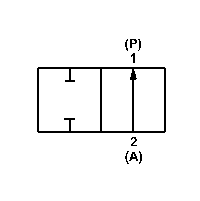
-
3-Port Valve
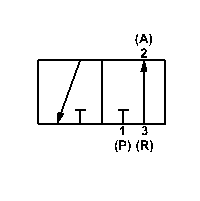
-
4-Port Valve
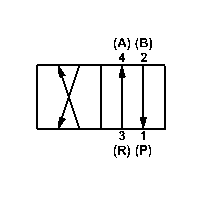
-
5-Port Valve
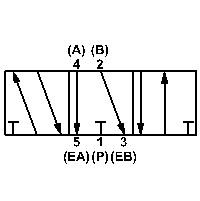
-
Dual 3-Port Valve
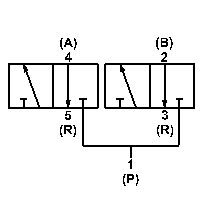
-
2-Port Valve
-
Application
- Single Use
- Manifolds
- Unit for Manifold Mounting
-
Switching Type
-
2-Position Normally Open

-
2-Position Normally Closed

-
2-Position Exhaust
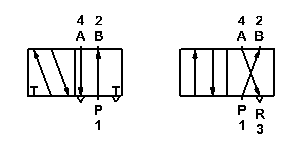
-
2-Position Pressure
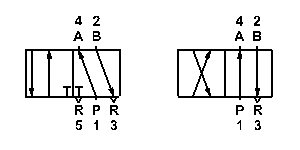
-
3-Position Closed Center

-
3-Position Exhaust Center

-
3-Position Pressure Center
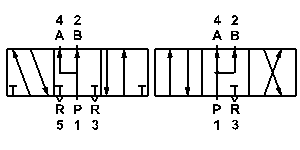
-
Others

-
2-Position Normally Open
-
Voltage
-
Number of Solenoids
- Single
- Double
-
Mounting Orientation
-
Direct

-
Manifold Base
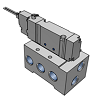
- Rail
-
Direct
-
Pipe Port Type
-
Specifications
- Standard
- High Frequency
- Low Vacuum Compatible
- Explosion Proof
- Drip-Proof
- Ozone Compatible
- Lubrication Free
- No Copper, fluoropolymer Type Material
- Low Current
- Cleanroom
-
Status at Power Off
- Self-Retaining
- Self-Recovery (Spring Return)
- Self-Recovery (Pressure Differential Return)
-
Plumbing Thread Nominal
-
Plumbing
-
Applicable Cylinder Dia.(Ø)
-
Type
- Solenoid Valves
- Master Valve
- Base Only
- Related Components
-
Driving Type
-
Connecting Tube Diameter
-
Pressure Rating(MPa)
-
Seal Type
-
CV Value
-
Pilot Air Supply
Related Categories to Solenoid ValvesDanh mục liên quan đến Solenoid Valves
FAQ Solenoid Valves
- Question: How do solenoid valves work? How does a solenoid valve control flow?
- Answer: Solenoid valves are electromechanical devices used to control the flow of fluids or gases in a system. They work based on the principle of electromagnetism. The valve consists of a coil (solenoid) and a plunger inside it.
When an electric current passes through the coil, it creates a magnetic field, which attracts the plunger to move. This movement of the plunger opens or closes the valve's passage, allowing or blocking the flow of fluid or gas through the valve.
By controlling the electric current to the coil, we can control the position of the plunger and, consequently, regulate the flow of the fluid or gas passing through the valve. - Question: What are the different types of solenoid valves?
- Answer: There are several types of solenoid valves based on their design and applications. The main types include:
2-way solenoid valves: These have one inlet and one outlet and are used to start or stop the flow of fluid or gas.
3-way solenoid valves: These have one inlet and two outlets (or vice versa). They can divert the flow between two different paths or mix two different fluids.
4-way solenoid valves: These have two inlets and two outlets and are commonly used in applications like directional control of pneumatic cylinders.
Direct-acting solenoid valves: These valves use the force of the solenoid to directly open and close the valve.
Pilot-operated solenoid valves: These use a smaller solenoid to control the flow of a larger valve, allowing them to handle higher pressures and flow rates. - Question: What are the applications of solenoid valves?
- Answer: Solenoid valves are used in various applications across industries due to their ability to control fluid and gas flow efficiently. Some common applications include:
Controlling water flow in irrigation systems and plumbing fixtures.
Regulating air and gas flow in pneumatic systems and HVAC systems.
Automation and control of industrial processes in factory automation.
Medical equipment, such as in blood analyzers and dental instruments.
Dispensing and vending machines for liquids and gases.
Automotive applications, like fuel and air control in engines. - Question: How to select the right solenoid valve for my application?
- Answer: To select the right solenoid valve for your application, consider the following factors:
Valve Type: Choose the appropriate valve type (2-way, 3-way, etc.) based on your flow control requirements.
Fluid or Gas Compatibility: Ensure the solenoid valve is compatible with the fluid or gas used in your system.
Flow Rate and Pressure: Determine the required flow rate and operating pressure to select a valve that can handle the expected conditions.
Voltage and Power: Check the voltage and power supply available in your system to match it with the solenoid valve's requirements.
Environmental Conditions: Consider factors like temperature, humidity, and surrounding conditions to ensure the valve can withstand the environment.
Response Time: Evaluate the response time needed for your application, as it impacts the speed of valve operation.





















How can we improve?
How can we improve?
While we are not able to respond directly to comments submitted in this form, the information will be reviewed for future improvement.
Customer Privacy Policy
Thank you for your cooperation.
While we are not able to respond directly to comments submitted in this form, the information will be reviewed for future improvement.
Please use the inquiry form.
Customer Privacy Policy